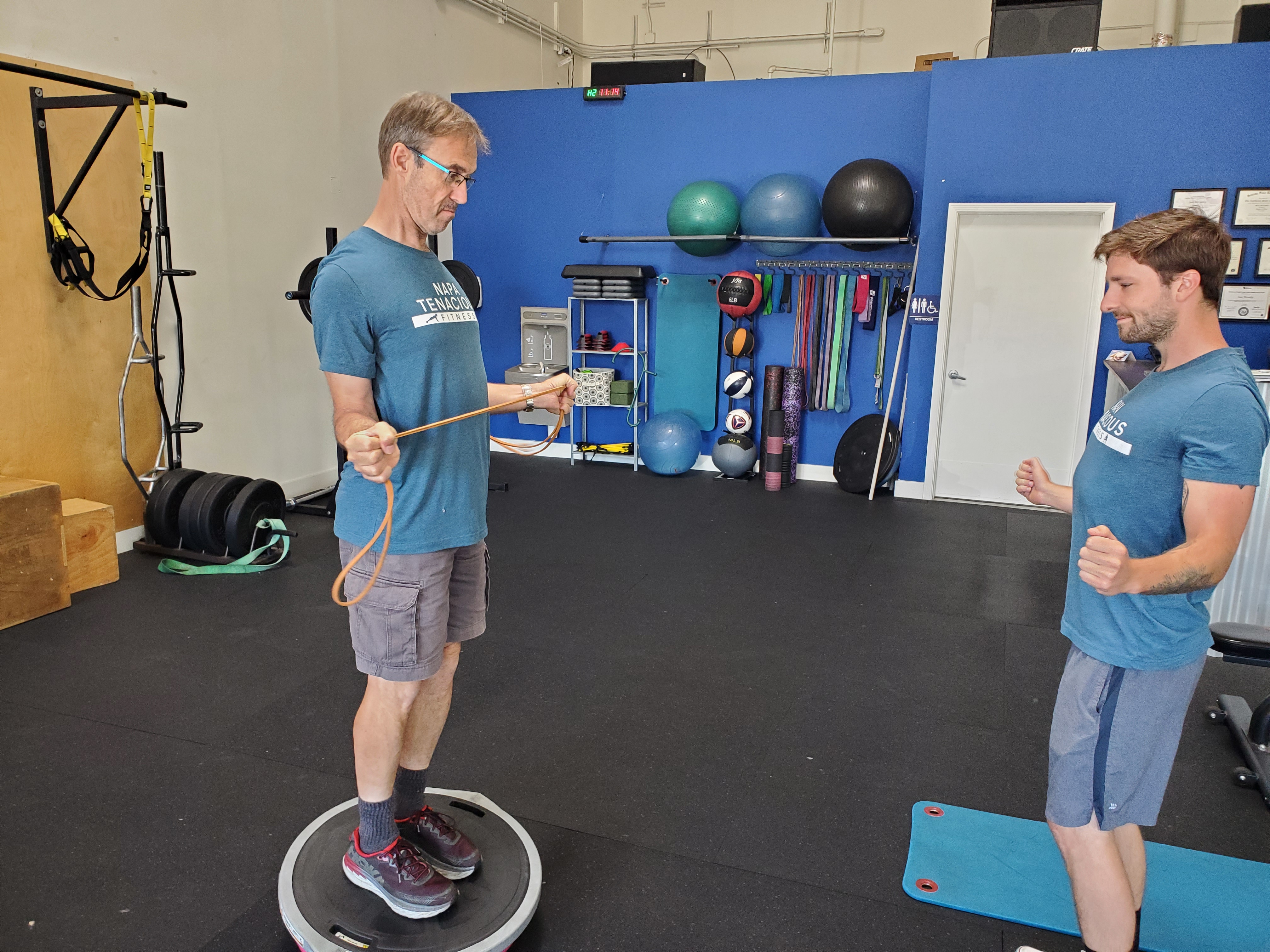Balance is a unique aspect of our physical activity affecting many interactions in our everyday lives. For example, the ability to get up from a seated position, get out of bed in the morning after a six to eight-hour slumber, or disembark from our car seats require an impressive combination of movements occurring simultaneously to perform correctly. If one of the neural pathways or muscles fails to fire in the appropriate sequence, one blip in the neuromuscular system responsible for a seemingly simple task, such as getting out of the car we use every day, can cause a loss of balance.
Losing balance can be related to the lack of ability to correct an imbalance. Scenarios that compromising balance can be as severe as an accidental collision of the shin stepping into a small dog or as simple as scraping the bottom of the shoe on an even section of pavement. The repercussions of losing balance can result in a substantial injury when the human body topples over from its normal vertical position and plummets to the ground.
Tripping and falling are noteworthy risk factors for individuals hindered by suboptimal abilities to correct the presentation of loss of balance, proprioception, and neuromuscular coordination. If the body’s strength and fitness levels are deconditioned, the potential to trip and fall from a loss of balance is more prevalent. Examples of abilities to correct an imbalance present themselves when a person bumps their foot on an object on the ground and can immediately address the disruption by reflexively placing their foot in a stable position allowing the body to regain balance. Proprioception is the body’s natural awareness of understanding exactly where the body is in an environment without necessarily looking around to identify where the body should move. A person with a well-conditioned core, hips, knees, and ankles can manage scenarios of imbalance due to the structural integrity of the ligaments, tendons, and muscles surrounding joints to allow the skeletal muscles to absorb the physical demands of erratic and intense movements following a correction to an event in which someone might trip and fall.
To assist in reinforcing these mechanisms that aid in the reinforcement of saving us from tripping and falling, adhering to a routine of exercise movements aimed at strengthening our core, hips, and lower extremities has the potential to decrease the risk of falling. For example, performing strengthening exercises such as squats, hip bridges, and planks are simple and effective tactics that target a broad surface area of muscles surrounding the spine, hip, knee, and ankle joints assist in reinforcing optimal balance. Additionally, participating in Yoga, Pilates, barre classes, and other small group fitness classes oriented toward flexibility, mobility, and single-leg balancing movements optimize improvements in the ability to correct presentations of imbalance.
Decreased physical activity, recovering from an injury, post-surgical procedure periods, or the advancement of age combined with reduced adherence to exercise are top offenders when it comes to developing poor balance. Setting aside time to maintain a strong and coordinated body through routine exercise adherence can significantly decrease the likelihood of tripping and falling.
Sean McCawley, the founder and owner of Napa Tenacious Fitness in Napa, CA, welcomes questions and comments. Reach him at 707-287-2727, napatenacious@gmail.com, or visit the website napatenaciousfitness.com.

